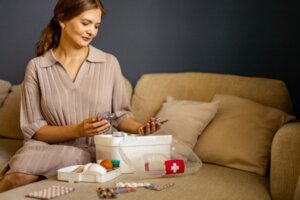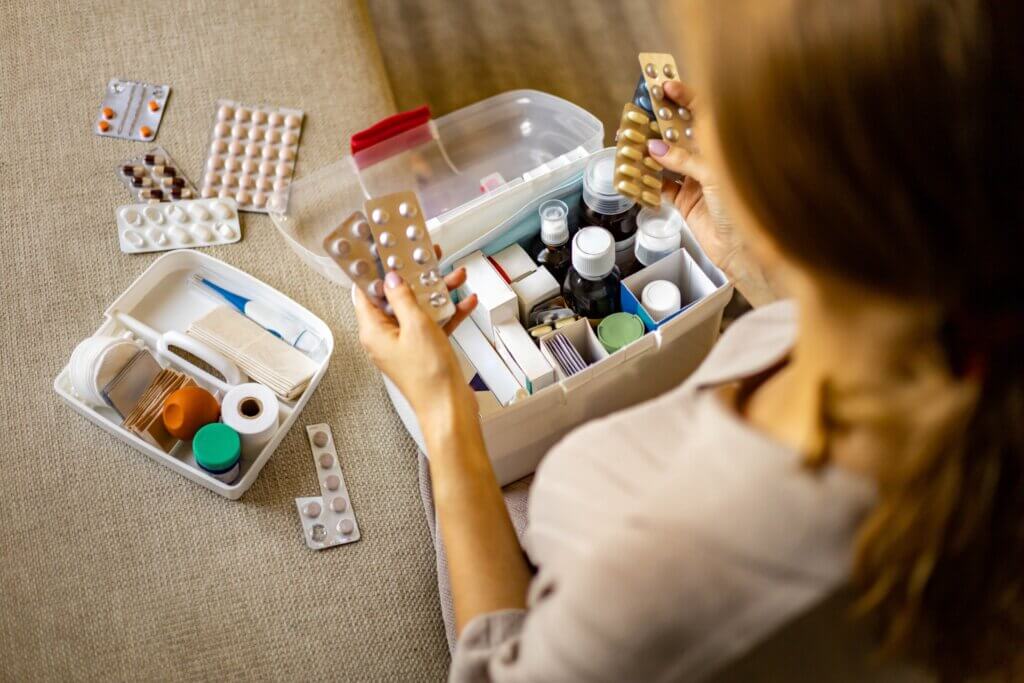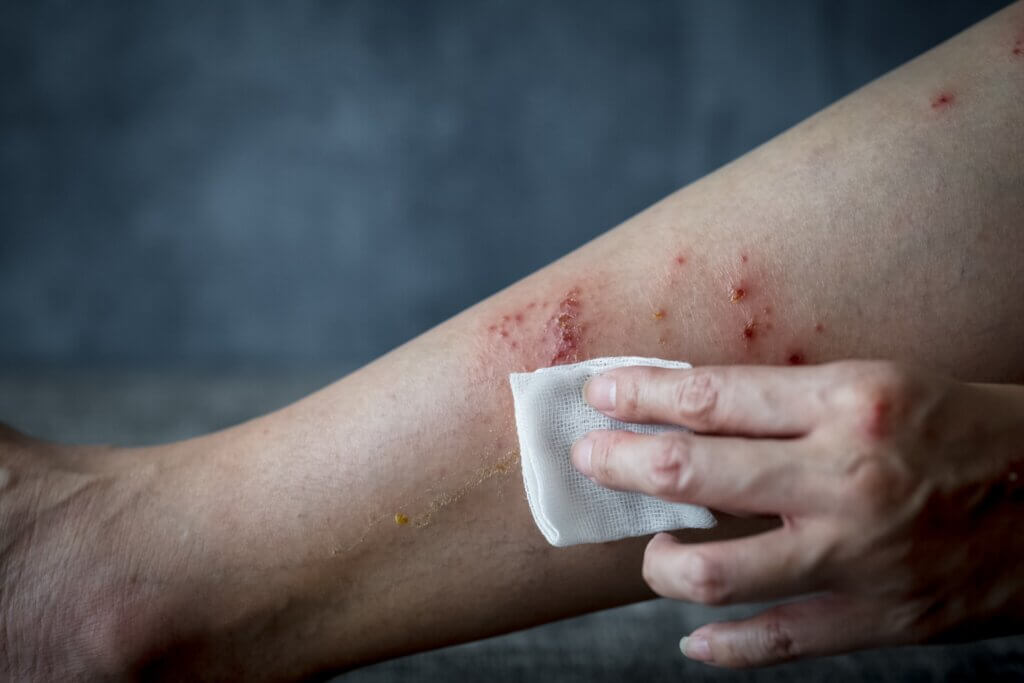What You Should Have in Your Medicine Chest at Home

The Centers for Disease Control and Prevention (CDC) remind us that anticipating natural disasters, disease outbreaks, and emergencies is critical to being able to take appropriate action. Among other things, this involves learning practical skills (such as CPR), having food and water supplies, and having a properly stocked medicine chest at home. Today, we’ll focus on the latter and guide you on what things you should have on hand.
Things you should have in your medicine chest at home
Before showing you the things that you should have in your medicine chest, we must do some reflecting. As experts point out, worldwide, the possession of medicines stored at home is increasing. Among other things, this is due to greater accessibility to them and a greater understanding of how to use them.
Undoubtedly, this has several benefits, but it’s fair to say that it also has disadvantages. For example, a study published in the Annals of Pharmacotherapy in 2008 found that home medicine kits are associated with increased self-medication. This is perhaps the greatest risk associated with its use, one that manifests a higher prevalence in younger populations.
Although home medicine chests are essential, their possession must be accompanied by responsible use. In this regard, each medication must be accompanied by its patient information leaflet. That way, you can know what the recommended dose is and in what contexts it can be used. The use of drugs outside their range of action isn’t uncommon, as occurs with antibiotics.
With that said, prepare to discover a list of essential things you need to put in your medicine chest. The actual contents will depend on many factors, such as your underlying conditions and current treatments. Even so, we’ll leave you with 12 things that can’t be missing.
1. Allergy medications
According to the World Health Organization (WHO), up to 20% of the population suffers from allergies. Antihistamines are a must in any home medicine cabinet, as are eye drops and decongestants. The recommended antihistamines are cetirizine and loratadine, although any of the newer generation options will work for you.
2. Antibacterial creams or ointments

For minor scrapes, abrasions, cuts, insect bites, and more, there’s nothing better than antibacterial creams or ointments. Many of them have healing properties, so opt for these for a more complete action. You can supplement them with hydrogen peroxide.
3. Painkillers
Pain relievers are perhaps the most used medications by people at home, although their inclusion on our list is mandatory. Of all the drugs, they’re perhaps the ones with the greatest risk of self-medication, often exceeding the recommended dose. Painkillers like aspirin, naproxen, acetaminophen, and ibuprofen are some suggestions, keeping in mind the warnings given.
4. Adhesive bandages
Adhesive bandages provide a physical barrier of protection in the case of an open wound, so they can’t be missing from your medicine chest. You can also add medical tape and butterfly bandages, which may be more appropriate for deep cuts. These may become essential in a first-aid scenario.
5. Thermometer
Any home medical kit would be incomplete without a thermometer. Far from popular belief, digital thermometers are very reliable and also relatively inexpensive. In fact, they’re faster, more reliable, practical, and safer. Please note that mercury thermometers are dangerous and not recommended for use.
6. Calamine Lotion
This is an over-the-counter topical medication that you can use for mild itching. Calamine lotion is recommended against interaction with insects, chickenpox episodes, contact with poisonous plants, oozing skin irritations, and other similar contexts. Allergic reactions are rare, as are their side effects.
7. Gauze

Gauze pads have multiple uses, from covering a wound before dressing it to performing sterilization and washing procedures. It’s very affordable, doesn’t take up much space, and is available without a prescription. Don’t rule out its inclusion even if you have bandages in the medicine cabinet, as both complement one another.
8. Medical prescription
In case you’re under the temporary or permanent treatment of some prescription drug, it’s best to have a valid medical prescription to be able to access it. Although it depends on the treatment, try to have a medical prescription valid for 30 days. That way, you can stock up again on a medicine you need when you suddenly run out.
9. Tweezers
Removing splinters, objects embedded in the skin, and others are some of the uses of tweezers. It may seem like a somewhat expendable object, but the truth is that every first-aid kit should have one. If you wish, you can get different sizes, so you can use them according to the case.
10. Sunscreen
Despite the campaigns and warnings about it, sunscreen remains an undervalued product for millions of people. Whenever you go outside, you should use it, and even indoors. Having an extra bottle in your medkit will allow you to access it when your main bottle is gone.
As you consider including all of these things in your emergency kit, you should also keep some considerations in mind. The most important of them is to have it in a place out of the reach of children. For example, a high place that they can’t find by chance. Checking dates twice a year and replenishing expired medications should also be your priority.
The Centers for Disease Control and Prevention (CDC) remind us that anticipating natural disasters, disease outbreaks, and emergencies is critical to being able to take appropriate action. Among other things, this involves learning practical skills (such as CPR), having food and water supplies, and having a properly stocked medicine chest at home. Today, we’ll focus on the latter and guide you on what things you should have on hand.
Things you should have in your medicine chest at home
Before showing you the things that you should have in your medicine chest, we must do some reflecting. As experts point out, worldwide, the possession of medicines stored at home is increasing. Among other things, this is due to greater accessibility to them and a greater understanding of how to use them.
Undoubtedly, this has several benefits, but it’s fair to say that it also has disadvantages. For example, a study published in the Annals of Pharmacotherapy in 2008 found that home medicine kits are associated with increased self-medication. This is perhaps the greatest risk associated with its use, one that manifests a higher prevalence in younger populations.
Although home medicine chests are essential, their possession must be accompanied by responsible use. In this regard, each medication must be accompanied by its patient information leaflet. That way, you can know what the recommended dose is and in what contexts it can be used. The use of drugs outside their range of action isn’t uncommon, as occurs with antibiotics.
With that said, prepare to discover a list of essential things you need to put in your medicine chest. The actual contents will depend on many factors, such as your underlying conditions and current treatments. Even so, we’ll leave you with 12 things that can’t be missing.
1. Allergy medications
According to the World Health Organization (WHO), up to 20% of the population suffers from allergies. Antihistamines are a must in any home medicine cabinet, as are eye drops and decongestants. The recommended antihistamines are cetirizine and loratadine, although any of the newer generation options will work for you.
2. Antibacterial creams or ointments

For minor scrapes, abrasions, cuts, insect bites, and more, there’s nothing better than antibacterial creams or ointments. Many of them have healing properties, so opt for these for a more complete action. You can supplement them with hydrogen peroxide.
3. Painkillers
Pain relievers are perhaps the most used medications by people at home, although their inclusion on our list is mandatory. Of all the drugs, they’re perhaps the ones with the greatest risk of self-medication, often exceeding the recommended dose. Painkillers like aspirin, naproxen, acetaminophen, and ibuprofen are some suggestions, keeping in mind the warnings given.
4. Adhesive bandages
Adhesive bandages provide a physical barrier of protection in the case of an open wound, so they can’t be missing from your medicine chest. You can also add medical tape and butterfly bandages, which may be more appropriate for deep cuts. These may become essential in a first-aid scenario.
5. Thermometer
Any home medical kit would be incomplete without a thermometer. Far from popular belief, digital thermometers are very reliable and also relatively inexpensive. In fact, they’re faster, more reliable, practical, and safer. Please note that mercury thermometers are dangerous and not recommended for use.
6. Calamine Lotion
This is an over-the-counter topical medication that you can use for mild itching. Calamine lotion is recommended against interaction with insects, chickenpox episodes, contact with poisonous plants, oozing skin irritations, and other similar contexts. Allergic reactions are rare, as are their side effects.
7. Gauze

Gauze pads have multiple uses, from covering a wound before dressing it to performing sterilization and washing procedures. It’s very affordable, doesn’t take up much space, and is available without a prescription. Don’t rule out its inclusion even if you have bandages in the medicine cabinet, as both complement one another.
8. Medical prescription
In case you’re under the temporary or permanent treatment of some prescription drug, it’s best to have a valid medical prescription to be able to access it. Although it depends on the treatment, try to have a medical prescription valid for 30 days. That way, you can stock up again on a medicine you need when you suddenly run out.
9. Tweezers
Removing splinters, objects embedded in the skin, and others are some of the uses of tweezers. It may seem like a somewhat expendable object, but the truth is that every first-aid kit should have one. If you wish, you can get different sizes, so you can use them according to the case.
10. Sunscreen
Despite the campaigns and warnings about it, sunscreen remains an undervalued product for millions of people. Whenever you go outside, you should use it, and even indoors. Having an extra bottle in your medkit will allow you to access it when your main bottle is gone.
As you consider including all of these things in your emergency kit, you should also keep some considerations in mind. The most important of them is to have it in a place out of the reach of children. For example, a high place that they can’t find by chance. Checking dates twice a year and replenishing expired medications should also be your priority.
- De Bolle L, Mehuys E, Adriaens E, Remon JP, Van Bortel L, Christiaens T. Home medication cabinets and self-medication: a source of potential health threats? Ann Pharmacother. 2008 Apr;42(4):572-9.
- Shobiye HO, Bolarinwa OA, Fasiku MM, Akande TM, Janssens W. What medicines do households keep in their cabinets? Understanding the possession and use of medicines at home and the role of health insurance in Nigeria. PLoS One. 2021 Feb 24;16(2):e0247591.
Este texto se ofrece únicamente con propósitos informativos y no reemplaza la consulta con un profesional. Ante dudas, consulta a tu especialista.







